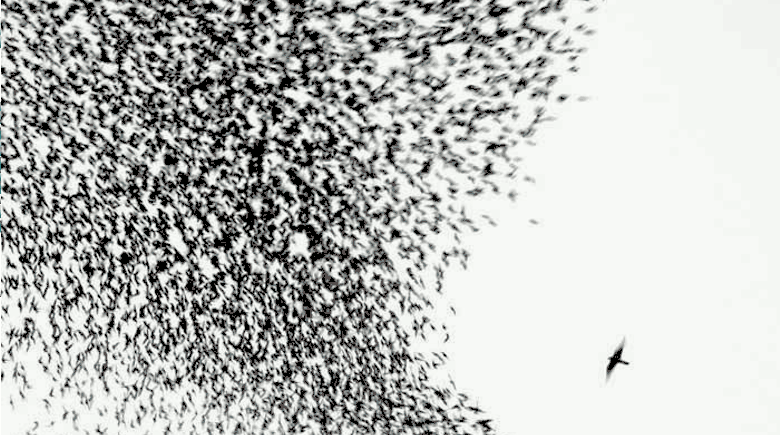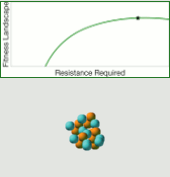
A flock of starlings responding to the approach of a peregrine illustrates how interactions of an individual with other members of a group may provide advantages against an external threat. Cancer cells, which are often densely clustered together, may use similar strategies to evade the immune system and reduce the toxicity of systemic treatments. (Image credit: Manuel Presti)
Despite decades of intensive research, most metastatic human cancers remain fatal. While many new therapies have been developed, cancer cells have a remarkable capacity to evolve resistance leading to treatment failure and tumor progression. How do cancer cell adapt so quickly to a toxic drug that they have never experienced before? Most investigations of treatment resistance focus on the properties of individual cells. However, we note that tumor cells are often packed together more densely that normal tissue. This suggests that this increased cellular density may provide an important level of protection for the cells against “predators” including the immune system and therapies administered by oncologists. In nature, large aggregations of animal – such as herds – provide a number of advantages so that each individual, through its interactions with other members of the herd, is safer from external dangers that it would be in the absence of the herd. So, we proposed that the resistance of a single cancer cell to therapy may extend beyond its own phenotypic and molecular properties and be influenced by the properties of surrounding cells and variations in cell density.
We explore evolution-based mathematical models to investigate aggregation effects that are likely play a significant role in conferring resistance to therapy on tumor cells that would otherwise be sensitive to treatment. We suggest this previously unrecognized dynamic s may be critical for evolution of resistance particularly during the initial administration of drug to which the cancer cells have not been exposed. However, we also demonstrate that some aggregation effects could be exploited to design evolutionarily enlightened therapies exploiting the detrimental effects of large groups of cancer cells.
Keywords: herd dynamics in cancer, Aggregation effects, cancer therapy, evolution and ecology of cancer

